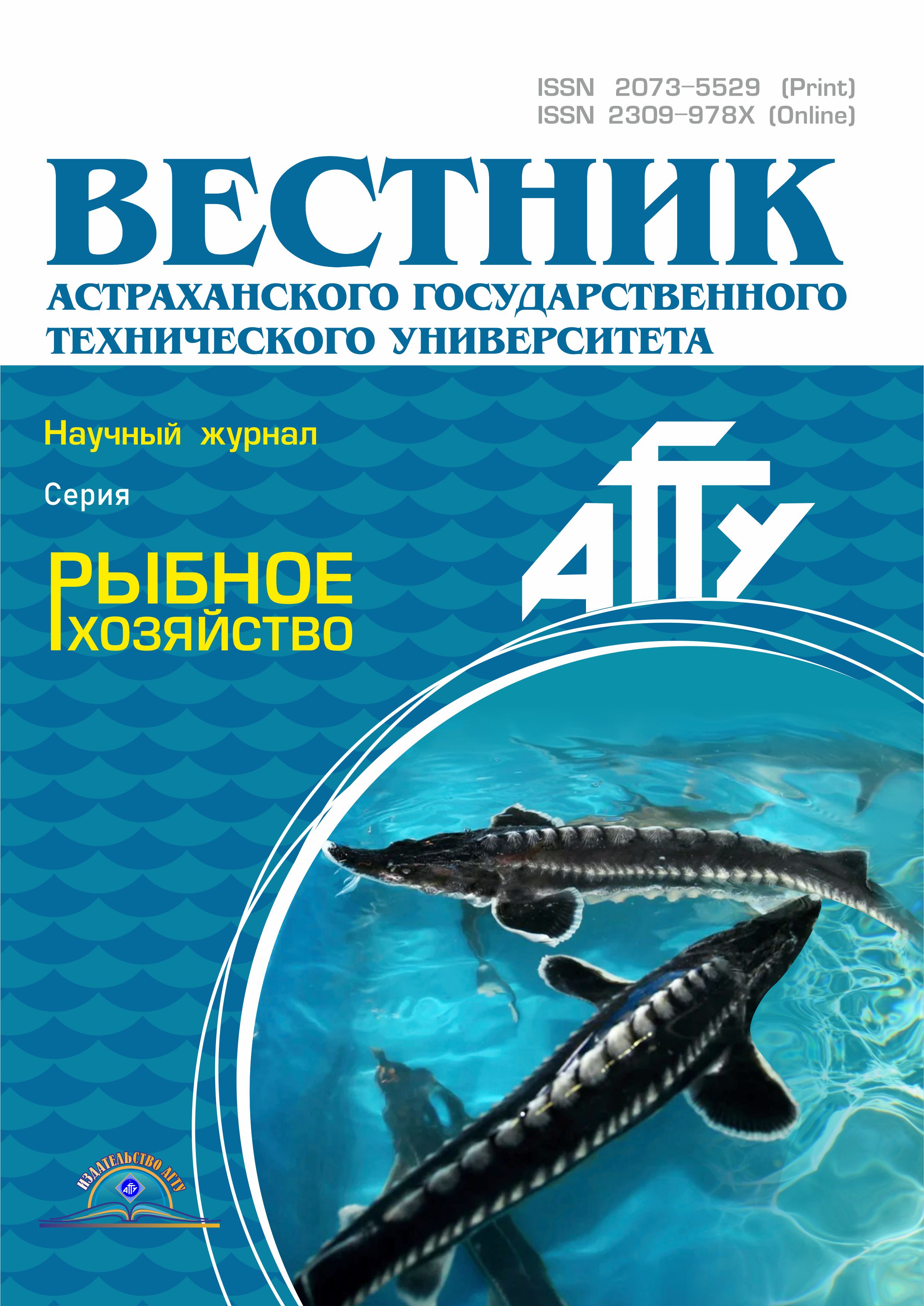CSCSTI 34.39
CSCSTI 62.13
CSCSTI 69.01
CSCSTI 69.25
CSCSTI 69.31
CSCSTI 69.51
CSCSTI 87.19
The article focuses on a simulation of a bacterial infection of fingerlings carried out in laboratory conditions in order to determine the effectiveness of the developed probiotic. The conditionally pathogenic strains of the genera Pseudomonas and Aeromonas have acted as an infectious agent. Carp fry were used as the test material for disease modeling and studying the effectiveness of a biological product developed for the prevention and treatment of bacterial diseases of fish. The experiment involved two experimental groups and the control one. The probiotic was given to the first experimental group as a feed additive before and after infection; the probiotic was not given to the second experimental group. Species in the control group were not infected and a biological product was not given. Attempts to infect carp fry with an association of strains Pseudomonas taiwanensis , Pseudomonas aeruginosa did not produce any results: after a 2-week period no deviations in the behavior of the fish were recorded, and no fish were killed. Such a situation could be caused by low pathogenicity or by the absence of pathogenicity in museum conditionally pathogenic strains. In the next experiment there was used a more aggressive strain Aeromonas punctata known as the causative agent of fish aeromonosis. Already on the third day after infecting with the pathogen Aeromonas punctata , fish in the second experimental group were killed, and deviations were observed in the form of low mobility of fish and spinal disorders of the type of twisting, which is a consequence of developing bacteriosis - aeromonosis. In fish of the first experimental group that received the previous dose of probiotic no violations were noted, all the fry remained alive. Thus, the therapeutic effect of the developed probiotic was proved on the aeromonosis model, which was expressed in a decrease in the total fish mortality by 27%.
aquaculture, pathogenic and conditionally pathogenic microorganisms, probiotics, antagonistic activity, biopreparation, fry
1. Garkavi B. L. Associativnoe zabolevanie tolstolobikov psevdomonozom i miksobolezom // Associativnye parazitarnye bolezni, problemy ekologii i terapii: materialy dokl. nauch. konf. (Moskva, 5-6 dekabrya 1995 g.). M.: Izd-vo RASHN, 1995. S. 45-46.
2. Matishov G. G., Ponomareva E. N., Zhuravleva N. G., Grigor'ev V. A., Luzhnyak V. A. Prakticheskaya akvakul'tura. Rostov n/D: Izd-vo YuNC RAN, 2011. 284 s.
3. Balakirev E. I., Sudakova N. V., Kuz'mina P. N. Rezul'taty po issledovaniyu kachestvennogo i kolichestvennogo sostava mikroflory kishechnika russkogo osetra pri ispol'zovanii preparatov probioticheskogo deystviya // Astrahan': FGUP NPC po osetrovodstvu «BIOS», 2005. S. 222-225.
4. Gonzalez C. J., Encinas J. P., Garcia-Lopez M. L. A Characterization and identification of lactic acid bacteria from freshwater fishes // Food Microbiol. 2000. N. 17. P. 383-391.
5. Skurat E. K. Probiotiki dlya profilaktiki bakterial'nyh infekciy u ryb // Bolezni gidrobiontov v akvakul'ture. Analiticheskaya i referativno-informacionnaya seriya. 2001. № 2. S. 30-32.
6. Chaucheyras F., Durand H. Probiotics in animal nutrition and health // Lallemand Animal Nutrition Blagnac. France. 2010. N. 1 (1). P. 3-9.
7. Golovin P., Golovina N., Romanova N., Shmakov N., Korabel'nikova O., Sychev G. Primenenie belkovoy kormovoy dobavki «Provit» pri vyraschivanii ryb // Ryb. hoz-vo. 2009. № 5. S. 56-59.
8. Droshnev A. Nespecificheskie faktory zaschity ryb pri ispol'zovanii kompleksnogo preparata «Vitarol-E» i furazolidona dlya lecheniya aeromonoza // Tr. VIEV. 2009. T. 75. C. 219-223.
9. Harikrishnan R., Kim M. C., Kim Ju-Sang, Balasundaramb C., Heo M. S. Probiotics and herbal mixtures enhance the growth, blood constituents, and nonspecific immune response in Paralichthys olivaceus against Streptococcus parauberis // Fish & Shellfish Immunology. 2011. N. 31. R. 310-317.
10. Astaf'eva S., Vasil'eva T., Fedoseeva E., Abdusamadov A. Sostoyanie iskusstvennogo vosproizvodstva osetrovyh ryb v Zapadno-Kaspiyskom rayone i predlozheniya po ego razvitiyu // Aktual'nye problemy sovremennoy nauki. 2010. № 6. S. 48-54.
11. Parshukov A. Harakteristika bakterial'noy mikroflory ryb i vodoemov rybohozyaystvennogo naznacheniya // Sadkovoe rybovodstvo: tehnologiya vyraschivaniya, kormlenie ryb i sohranenie ih zdorov'ya: materialy nauch. konf. (Petrozavodsk, 13-17 oktyabrya 2008 g.). Petrozavodsk: Izd-vo PGU, 2008. S. 79-82.
12. Tejpal Dahiya, Gahlawat S. K., Sihag R.C. Elimination of Pathogenic Bacterium (Micrococcus sp.) by the Use of Probiotics // Turkish Journal of Fisheries and Aquatic Sciences. 2012. V. 12. P. 185-187.
13. Tatsuro Hagi, Takayuki Hoshino. Screening and Characterization of Potential Probiotic Lactic Acid Bacteria from Cultured Common Carp Intestine // Bioscience, Biotechnology, and Biochemistry. 2009. N. 73 (7). P. 1479-1483.
















